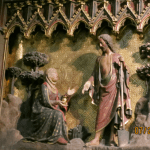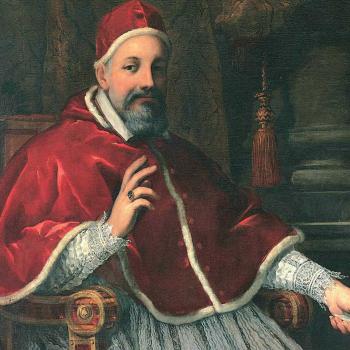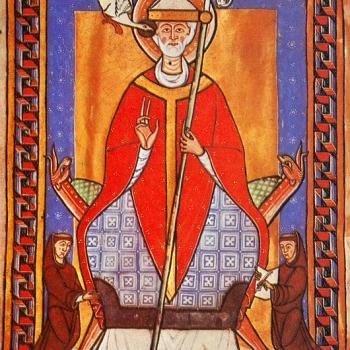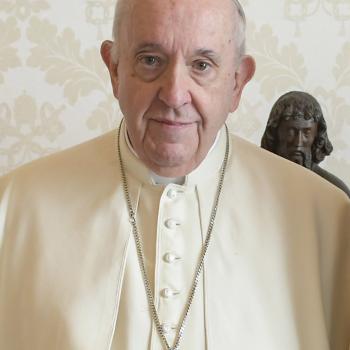In May 1991 the Catholic Church marked the 100th anniversary of Rerum Novarum, the Industrial Age encyclical in which Pope Leo XIII insisted that “It is neither just nor human so to grind men down with excessive labour as to stupefy their minds and wear out their bodies.” Engaged in a “re-reading” of Rerum Novarum as Communism collapsed in Eastern Europe, Pope John Paul II warned against celebrating an unfettered capitalism that could “achieve a greater satisfaction of material human needs than Communism, while equally excluding spiritual values.” Like his 19th century predecessor, John Paul affirmed the importance of trade unions, which “defend workers’ rights and protect their interests as persons, while fulfilling a vital cultural role, so as to enable workers to participate more fully and honourably in the life of their nation and to assist them along the path of development.”
Tellingly, John Paul chose to release Centisimus Annus on May 1st — not just International Workers’ Day but, for Roman Catholics, the feast of St. Joseph the Worker.

I have to admit: until I looked it up over the weekend, I didn’t even realize that this was a thing. Among Protestants like me, Joseph tends to get even less attention than his wife. And while this May 1 feast usually receives some coverage over at our sister Catholic channel, I don’t get the sense that it’s especially prominent in American Catholicism. First, it has to compete with the older feast of St. Joseph on March 19th (which itself risks being overshadowed by what happens two days earlier). Second, to the extent that Americans celebrate organized labor at all, they wait another four months.
But in most of the world, May Day is International Workers Day. And that occasion was so closely bound up with ideologies of the Left that Pope Pius XII decided to create a Catholic alternative in 1955.
It wasn’t the first time that a pope had enlisted St. Joseph in this particular crusade.
Warning in 1937 against “bolshevistic and atheistic Communism, which aims at upsetting the social order and at undermining the very foundations of Christian civilization,” Pope Pius XI placed “the vast campaign of the Church against world Communism under the standard of St. Joseph, her mighty Protector.” In an encyclical issued on the saint’s (March) feast day, that Pius observed that Joseph “belongs to the working-class, and he bore the burdens of poverty for himself and the Holy Family, whose tender and vigilant head he was.”
But with the Cold War beginning to deepen, a young Robert Drinan asked in the May 4, 1946 issue of the Jesuit magazine America why “the saint who should be at the very head of the attack which the Church is making against communism is rarely invoked or even known in this connection[.]” Perhaps, the future Democratic representative speculated, because “the politically subversive element of communism has been so frequently stressed by Catholics that the stark materialism of Marxism has not received its due counter-action. Thus, in the concentration of effort to oppose the communist effort on the socio-economic level, the necessity of resisting it on the spiritual plane has been neglected.”
Enter Pius XII, whom historian Michael Phayer has described as “the first Cold Warrior,” so struck by the Spartacist rising he witnessed in 1919 and by later Stalinist persecution of Christians that he would view Nazism as a lesser evil. Biographer Joseph Ventresca questions that interpretation, but he acknowledges that Pius XII “never wavered in the conviction that, together with the pagan nationalism and racialism of the Nazis, the atheistic materialism of Soviet Communism constituted one of the great heresies of the modern age.”
The former Eugenio Pacelli was particularly concerned with rising Communist influence among Italian workers. At the end of World War II, he feared that the Vatican would find itself “surrounded by a restless, agitated and extremist population.” In 1949 the papacy threatened to withhold the sacraments from Catholics who joined the Communist Party — or published, disseminated, or even read Communist literature.
Then on May 1, 1955, Pius XII addressed representatives of an Italian Catholic trade union group: (here’s the full Italian text — I’m quoting a translation from a 2017 article in Aleteia)
How many times we have said and explained the love of the Church for the workers! Yet it is widely propagated the heinous slander that ‘the Church is an ally of capitalism against the workers!’ The Church, mother and teacher of all, is always very caring towards the children who are in the most difficult conditions, and also has made a valuable contribution to the achievement of honest progress already made by the various categories of workers….
[As] the Vicar of Christ, we wish to reaffirm highly, on this day of May 1 … the dignity of work, and [to] inspire social life and laws, based on a fair share of rights and duties … [We have determined to] establish the liturgical feast of St. Joseph the Worker, assigning it precisely on the 1st of May … because the humble craftsman of Nazareth not only embodies the dignity of the arm of the worker … he is also always the guardian of you and your families.
(Incidentally, 1954-1955 marked the highwater mark of union membership in this country, accounting for as many as 35% of workers. By the 1980s, that figure was just over 20%, and it’s now just over 10%.)
Even recent biographers like Ventresca and Frank Coppa, who both pay significant attention to Pius’ role in the Cold War, don’t mention this 1955 announcement. And I don’t know whether or not this day’s commemoration of Joseph has actually become a Catholic alternative to May Day, in Europe or elsewhere.
But I did find notable one early adopter of the feast: Dorothy Day, who responded a year later in the May 1956 issue of The Catholic Worker:
We used to think of May Day as our old radical holiday; the anniversary of the first issue of the Catholic Worker to appear on the streets of New York in 1933; the beginning of Mary’s month, when little children walked in procession dressed in white veils, laden with flowers, crowning our Lady, Queen of the May. A joyful time, a time when winter is over and gone and the buds are bursting out on all the trees, the spring peepers are heard down the brook at the Staten Island farm and there is promise of warmth in the air.
Embed from Getty Images
But she was “delighted” to mark May 1st with a celebration of the namesake of one of her movement’s first two “houses of hospitality”:
St. Joseph never fails. He always answers petitions. He founds homes from [sic] the Blessed Mother and Child, protected them in exile, worked for them with all the strength of young and vigorous manhood. He was a man, and a saint, and we who believe in the resurrection of the body and life everlasting, can go to him now today in thanksgiving and joy and ask him for the same abundance of spiritual flavors that he has granted us materially.
I don’t expect readers of this Patheos channel to engage in that kind of prayer. But I do think it’s worth evangelicals using a day named for a carpenter as an occasion to reflect on their own response to the problems facing working men and women. “Lacking an equivalent to Catholic social thought,” wrote Michael Gerson in his widely read Atlantic piece on Trump and evangelicalism, “many evangelicals seem to find their theory merely by following the contours of the political movement that is currently defending, and exploiting, them.” But in what the U.S. Conference of Catholic Bishops has called “a time of kairos, a moment of crisis as well as opportunity” for labor, evangelicals should have something more robust to offer than cynical support for a wealthy populist who can inflame but never ameliorate the concerns of the working class.













